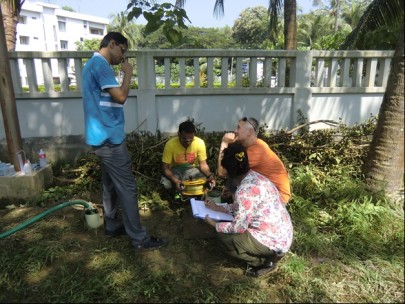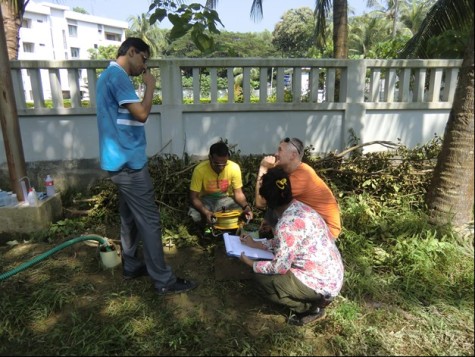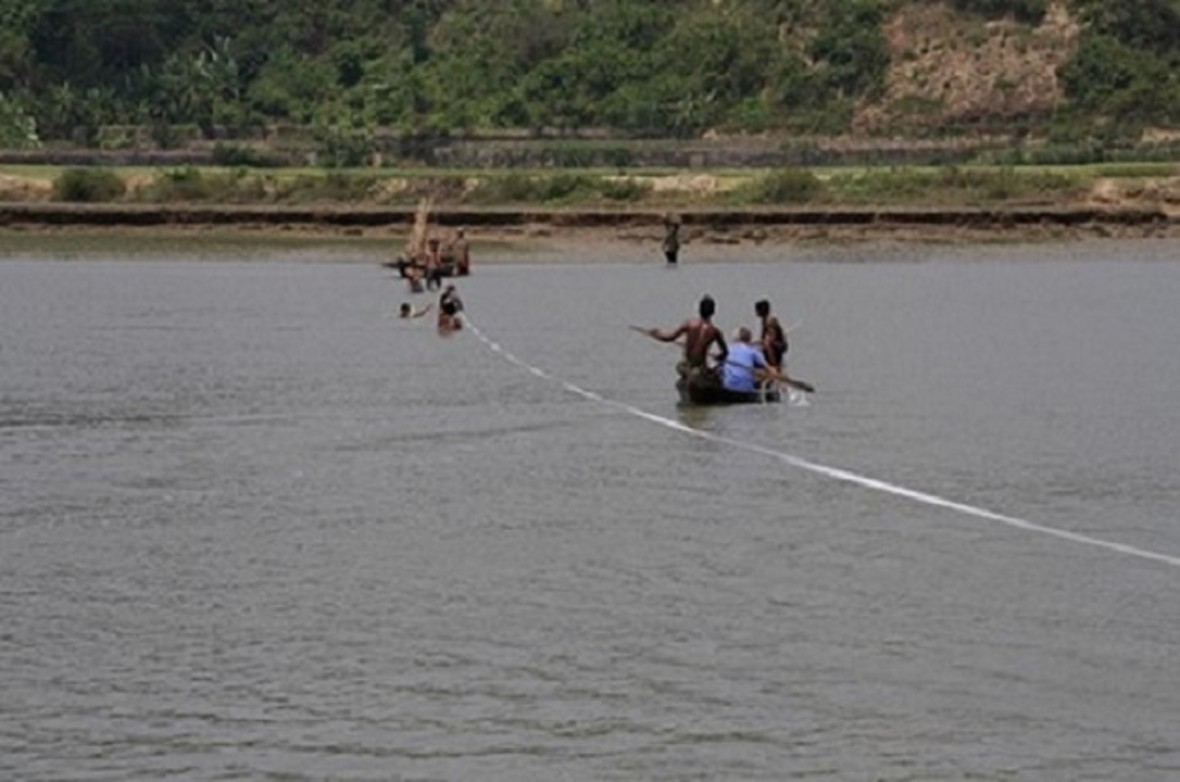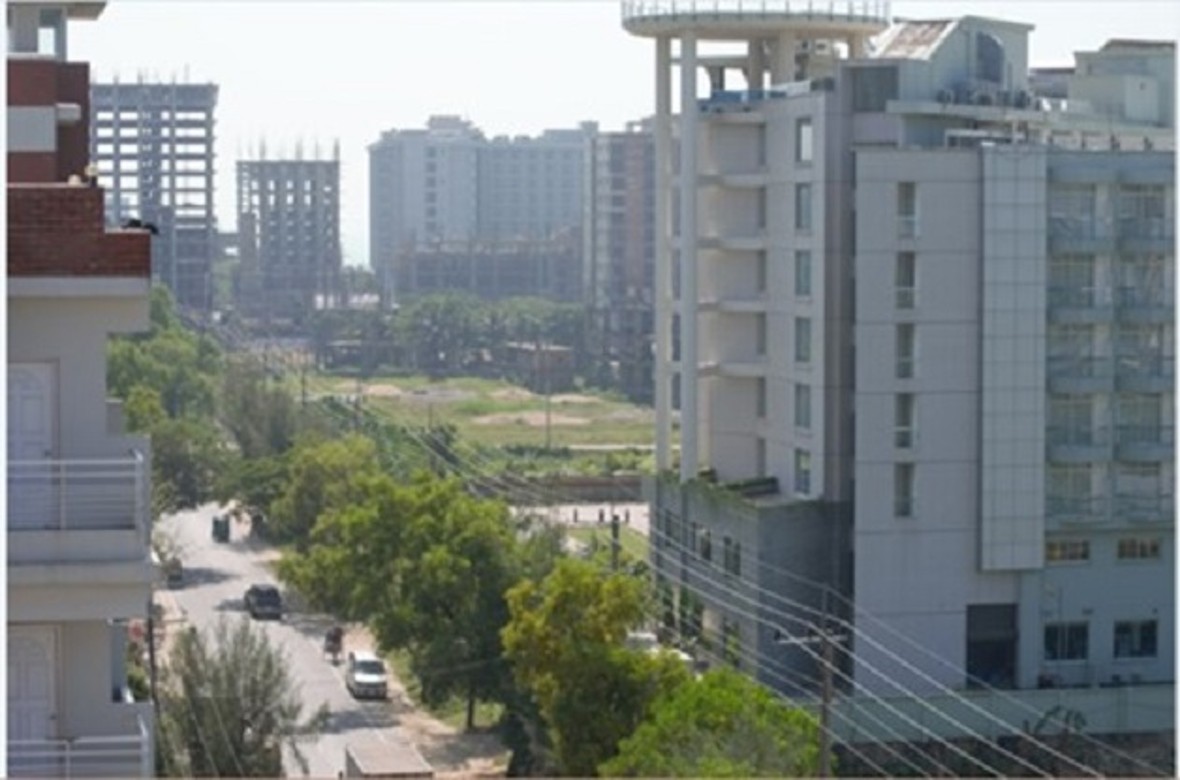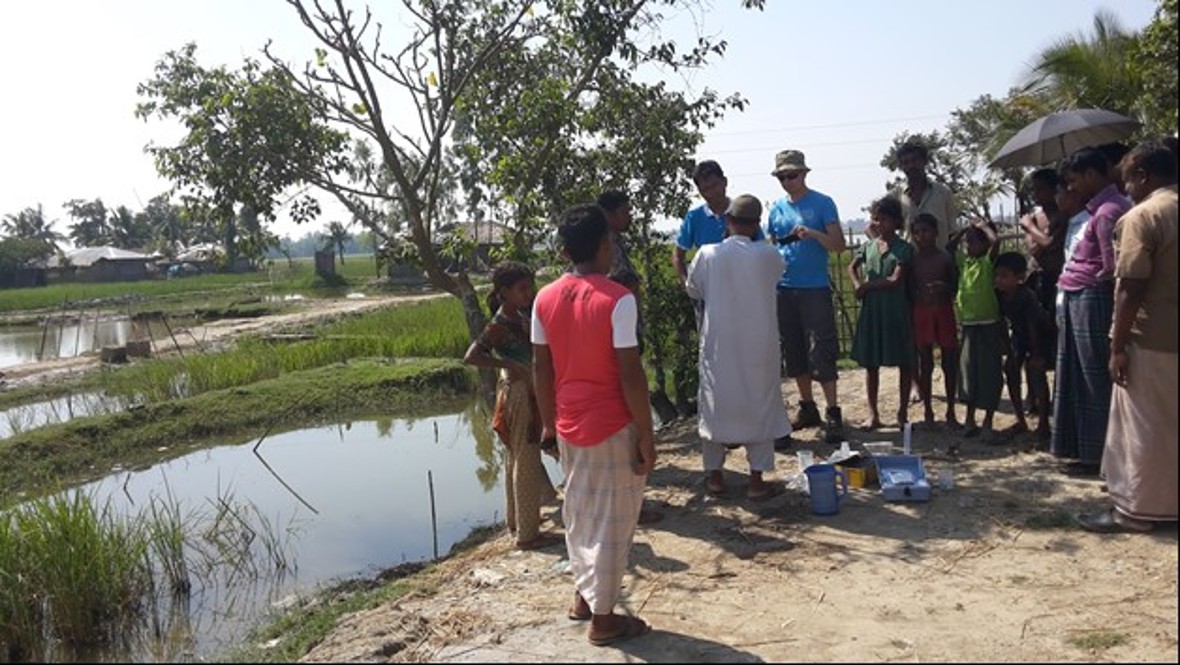The Cox’s Bazar region at the southeastern coast of Bangladesh has been gradually changed from a rural settlement into a densely populated urban area, caused by the rapid growth of tourism. The development of the coastal zone is, to a large extent unplanned, threatening the groundwater resources in the coastal aquifers.
Cox’s Bazar is one of the major tourist spots in south-eastern Bangladesh. Nearly 2 million visitors visit every year due to its unbroken 120 km long sandy beach in the dry period of the year. Especially the largely increased freshwater demand of the touristic destinations, mainly covered by pumping of groundwater, is threatening the groundwater resources and its sustainability in the coastal aquifers. Additionally, water resources in this area are exploited without any metering and regulations. Hence, overexploitation and seawater intrusion has been identified as major risks counting on the groundwater resource of Cox’s Bazar. However, the available information of hydrogeology and awareness of seawater intrusion vulnerability of this economically important aquifer is almost missing.
Therefore, the main goal of this project is to understand the hydrogeological conditions and the groundwater quality in the Cox’s Bazar area in more detail and based on this to develop a vulnerability zone of groundwater in this coastal zone that can be used for a smart management of the groundwater resources.
To accomplish the objectives groundwater and surface water quality was studied at the end of the dry period and at the end of the wet period for 2 years. Different hydrochemical, isotope techniques have been used together with GIS techniques to evaluate the seawater intrusion in this coastal region of |Bangladesh. In addition, sampling locations were chosen to cover the Cox’s Bazar city and its vicinity where the high stress on groundwater resources due to the development of the hotel industry. Also, the groundwater level monitoring net consisting of 5 automatic piezometers was set to investigate the spatial and temporal variation of water level I the study area.
The specific outcomes that are expected from this project are, therefore:
- Assessment of the groundwater quality of the aquifers and their hydro-chemical characterization
- Parameterization of the aquifers in terms of hydraulic parameters
- Mapping of the extent of salinity intrusion and salinity level in the aquifers
- Finally, to determine the zones potentially vulnerable to seawater intrusion and to manage the available coastal groundwater resources.
Country, Continent: Bangladesh, Asia
Funding agency: Studienstiftung des Deutschen Volkes and BMBF
Years of activity: 2014-2018
Responsible person: Suraiya Fatema
Cooperation Partners:
- Bangladesh Water Development Board, www.bwdb.gov.bd/
- University of Dhaka, Bangladesh, www.du.ac.bd/
- Bangladesh University of Engineering and Technology, www.buet.ac.bd/

